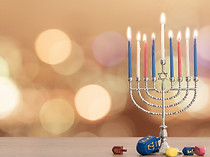Radiance and Covering: Moses, the Veil, and Atonement
- Leisa Baysinger

- Oct 3
- 3 min read

In Jewish tradition, Moses’ descent from Mount Sinai with the second set of tablets is believed to have occurred on Yom Kippur—the Day of Atonement. This moment, marked by divine forgiveness and radiant glory, is foundational to the Jewish understanding of kippur, a word rooted in kafar, meaning “to cover.” The convergence of Moses’ shining face, the veiling of glory, and the liturgical veil (parokhet) in the Tabernacle and Temple reveals a layered theology: sin is covered, glory is veiled, and mercy makes nearness possible.
Rabbinic sources such as Pirkei de-Rabbi Eliezer (Chapter 46) and Midrash Tanchuma (Ki Tissa 31) teach that Moses ascended Mount Sinai for the third time on the first of Elul and descended forty days later—on the tenth of Tishrei, Yom Kippur—with the second tablets. This descent marked the completion of Israel’s reconciliation with God after the sin of the golden calf.
The Talmud (Bava Batra 121a) affirms this chronology, noting that the tenth of Tishrei became a day of divine pardon. Thus, Yom Kippur is not only a day of ritual atonement but a historical echo of Moses’ radiant return and the restoration of covenant. This episode with Moses helped the Israelites to understand repentance, forgiveness, covering and presence.
Scripture records that Moses’ face radiated with divine light after speaking with Adonai:
“When Moshe came down from Mount Sinai with the two tablets of the testimony in his hand, he didn’t realize that the skin of his face was sending out rays of light as a result of his talking with Adonai.” (Exodus 34:29, CJB)
The people were afraid to approach him, and Moses veiled his face:
“Then Moshe would put the veil back over his face until he went in again to speak with him.” (Exodus 34:35, CJB)
This veil was not merely practical—it was theological. Just as sin required covering through atonement, glory required covering to protect the people. The veil over Moses’ face became a living metaphor for the parokhet—the veil in the Tabernacle and later the Temple that separated the Holy Place from the Most Holy Place.
The parokhet (פָּרֹכֶת) was the embroidered curtain that shielded the Ark of the Covenant, behind which the Shekhinah—the manifest presence of God—dwelt. Only the high priest could pass beyond it, and only once a year, on Yom Kippur.
As commanded in Leviticus 16:12–13 (CJB):
“He is to take a censer full of burning coals from the altar before Adonai and two handfuls of ground, fragrant incense, and bring it inside the curtain. He is to put the incense on the fire before Adonai, so that the cloud from the incense will cover the Ark-cover which is over the testimony, thereby preventing him from dying.”
These scriptures in Leviticus (about the censor being taken into the Holiest Place) are also echoed in Hebrews 9:3-4. The writer of Hebrews completely understood the Temple and all things pertaining to its function.
The incense cloud was not decorative—it was protective. It covered the high priest from the overwhelming holiness of Yah’s presence. Just as Moses veiled his face, the high priest veiled his approach with smoke. The divine glory was not denied—it was mercifully shielded.
The word kaporet (כַּפֹּרֶת), often translated “mercy seat” or “Ark-cover,” shares its root with kippur. It was the golden lid atop the Ark of the Covenant, flanked by cherubim, where the blood of atonement was sprinkled.
The kaporet was not merely a lid—it was a place of meeting and mercy. As God said:
“There I will meet with you; I will speak with you from above the Ark-cover, from between the two k’ruvim.” (Exodus 25:22, CJB)
Thus, the kaporet was both a covering and a conduit—a shield and a sanctuary. It covered the tablets of the covenant, just as Moses’ veil covered the radiant imprint of divinity.
This forty-day period mirrors the season of Teshuvah (repentance), culminating in Yom Kippur. The descent with the tablets and the veiling of glory align with the high priest’s entry behind the parokhet, the incense cloud, and the sprinkling on the kaporet. Both Moses and the high priest mediate divine presence through covering.
All of these Appointed Times point as shadow pictures to Messiah Yeshua and His work. The book of Hebrews describes how He became our eternal High Priest. It also explains how He became the goat of atonement. In addition, one day He will return and seal the books of judgment on a Yom Kippur.
Residing in Messiah Yeshua,
Leisa







Comments